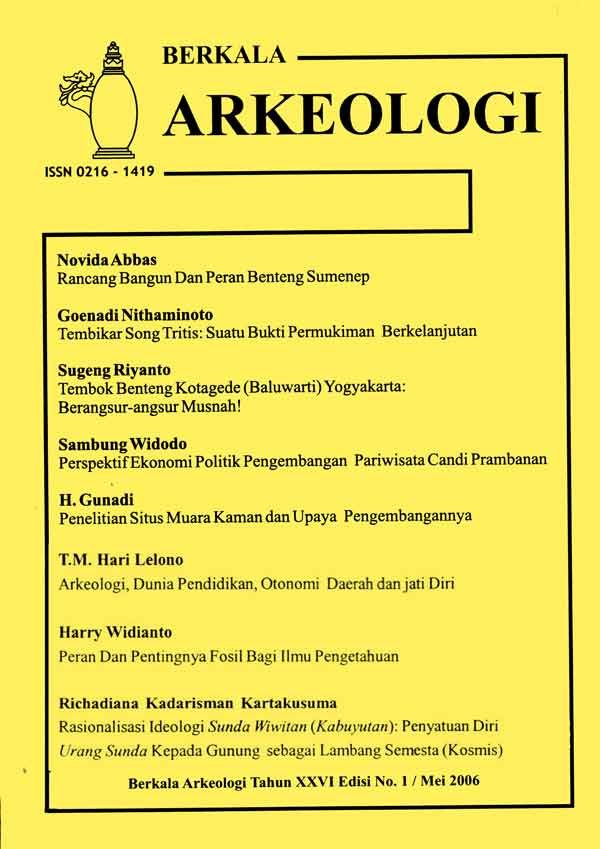PERAN DAN PENTINGNYA FOSIL BAGI ILMU PENGETAHUAN
Main Article Content
Abstract
One of the perceptions of the wider community regarding the meaning of a fossil in everyday life-among other things, is ancient or ancient objects. It is easier for the general public to relate the notion of fossils to something that is antique and in context of the past. Some of these perceptions are true, but in fact a fossil has a broader and more specific meaning. Therefore, the people's perception of fossils above is only an initial understanding - a part of the whole understanding - which is still far from the real understanding of a fossil, so it must be equipped with more perfect definitions. In the above context, this paper will try to provide some understanding of fossils and their details, so that people's perceptions of the inappropriate understanding of fossils can be avoided.
Article Details

This work is licensed under a Creative Commons Attribution-NonCommercial-ShareAlike 4.0 International License.
References
Bates, Robert I., and Julia A. Jackson, 1984. Dictionary of Geological Times. New York: Anchor Press Books.
Casanova, Richard, 1960. Fossil Collecting,An Illustrated Guide. London: Faber and Faber.
De Vos, John, F. Aziz, P.Y Sondaar, 1993. "Les faunes de quaternaires de Java", Les Dossiers d' Archeologie, no. 184: 56-61.
Sondaar, P.Y., 1981. "The geochelon faunas of the Indonesia Archipelago and their paleogeographical and biostratigraphical significance", Modern Quaternary Research in Southeast Asia, 6: pp. 111-120.
Widianto, Harry, 1993. "Unite et Diversite des Hominides de Java : Presentation de Restes Humains Fossiles Inedits ", Desertasi. Paris : Institut de Paleontologie Humaine, Museum National d'Histoire Naturelle : 284 halaman.
Widianto, Harry, 2004. "Siapakah Dia, Homo Floresiensis ?", Kompas 5 November 2004.

